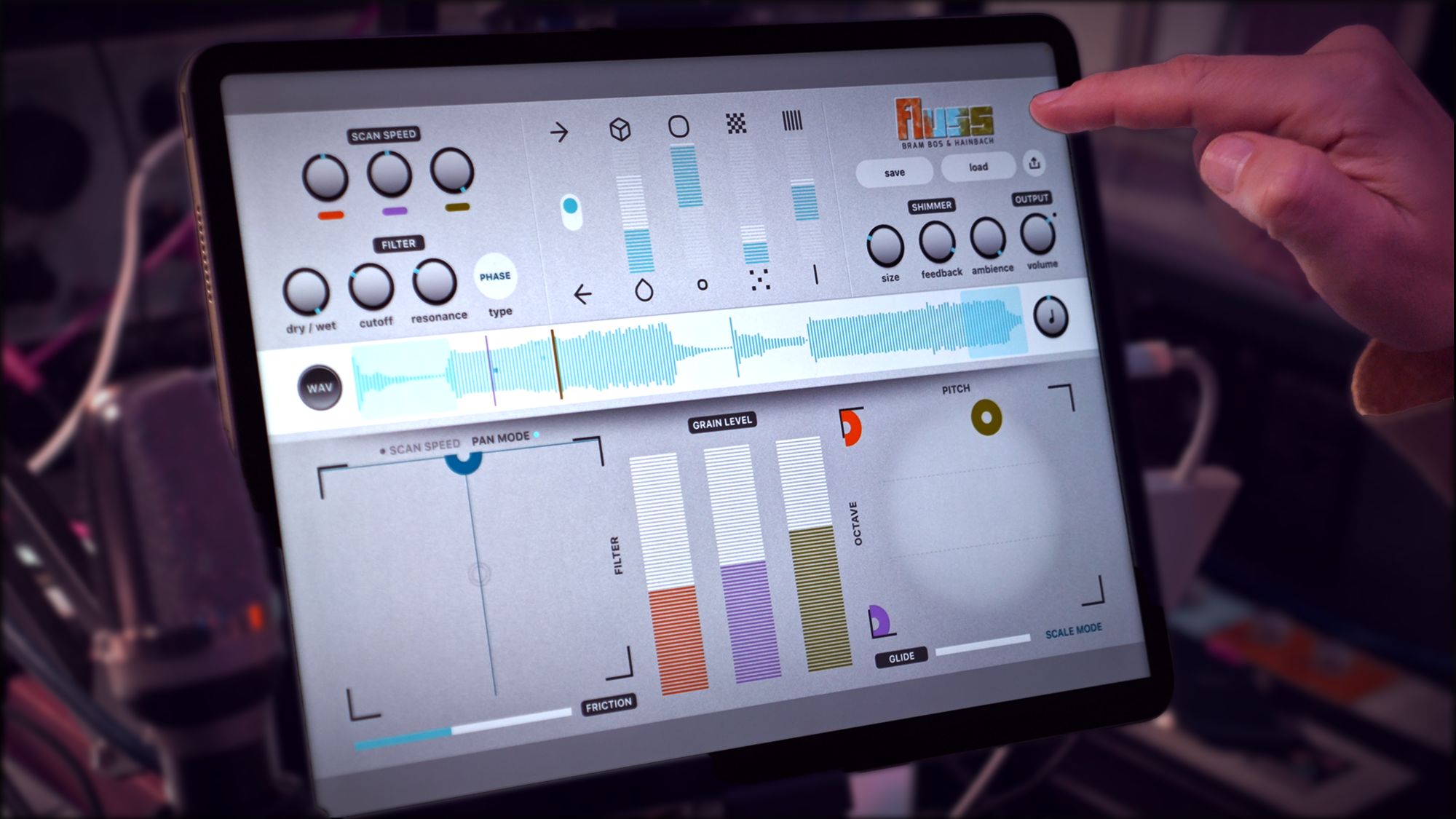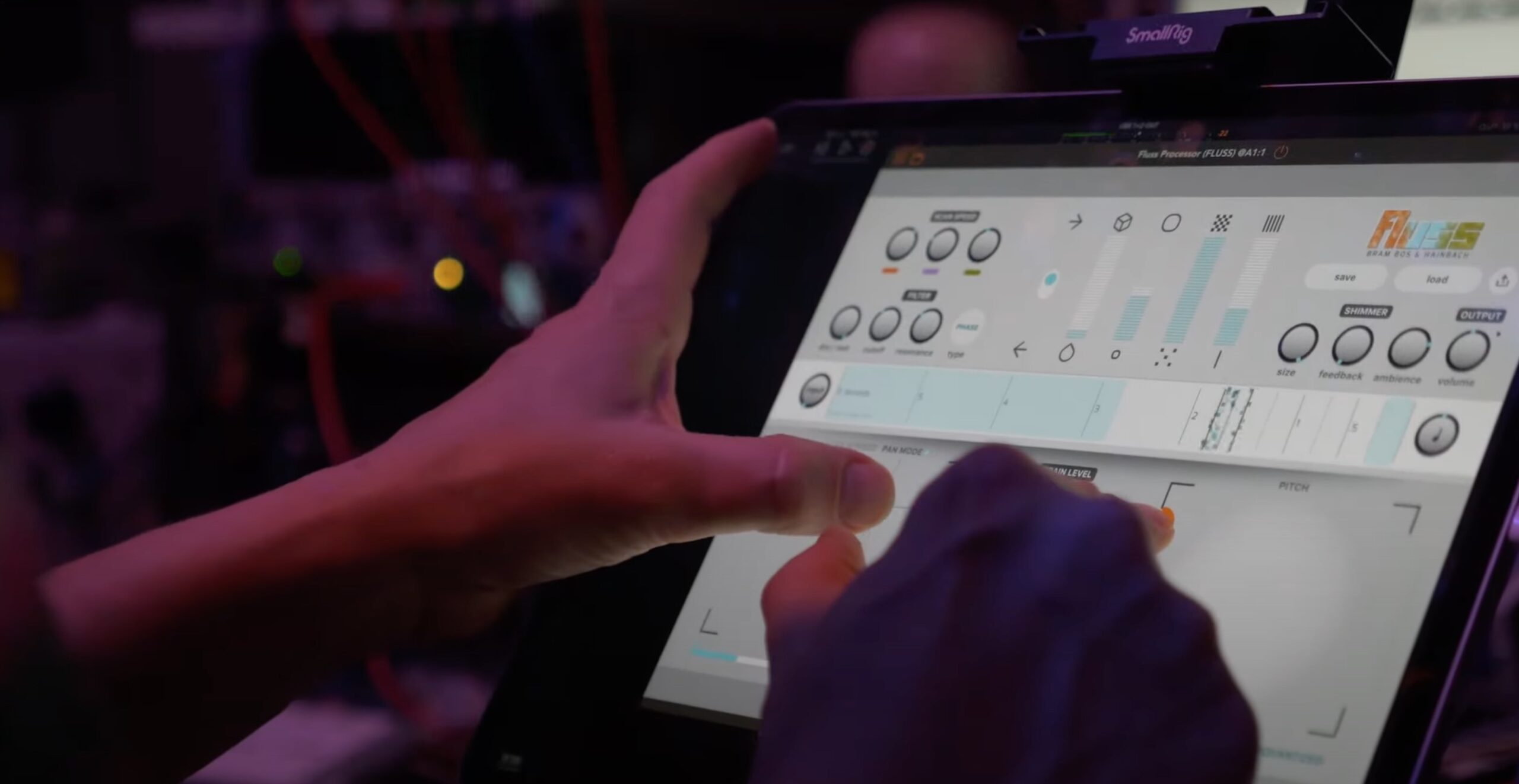
Welcome to Fluss, a granular synthesizer and effect processor with a kinetic control interface, designed by Bram Bos and Hainbach.
Fluss makes full use of the touch capabilities of iOS devices to get you as close to the grains as possible. We created it to be both inviting and fun to play, yet sonically rich and full of sound creating possibilities.
You can set it up to process instruments live, or use it standalone to reshape your sound library into a shimmer of harmony and chaos. Play it like a synth or create generative patches that keep changing over hours. It is all in your hands, and you are the modulation.
The way you interact with grains in Fluss was inspired by composer Iannis Xenakis and his ideas on collision („Formalized Music“, 1971).
- 3 Voice grain engine, each with an independent playhead
- Filter inspired by the Oberheim Xpander, including its resonant Phase filter
- Kinetic sliders and pads for playful interaction with the sound
- Contains a ton of presets recorded and designed by Hainbach
- Universal design (iPhone and iPad; iPad Air 2 or higher recommended)
- Custom scales, unquantised mode and even Scala-import for microtonal experiments
- Use WAVs, record audio or load the app as a live-processing audio effect
- Real world tested as an instrument in numerous live performances by Hainbach




